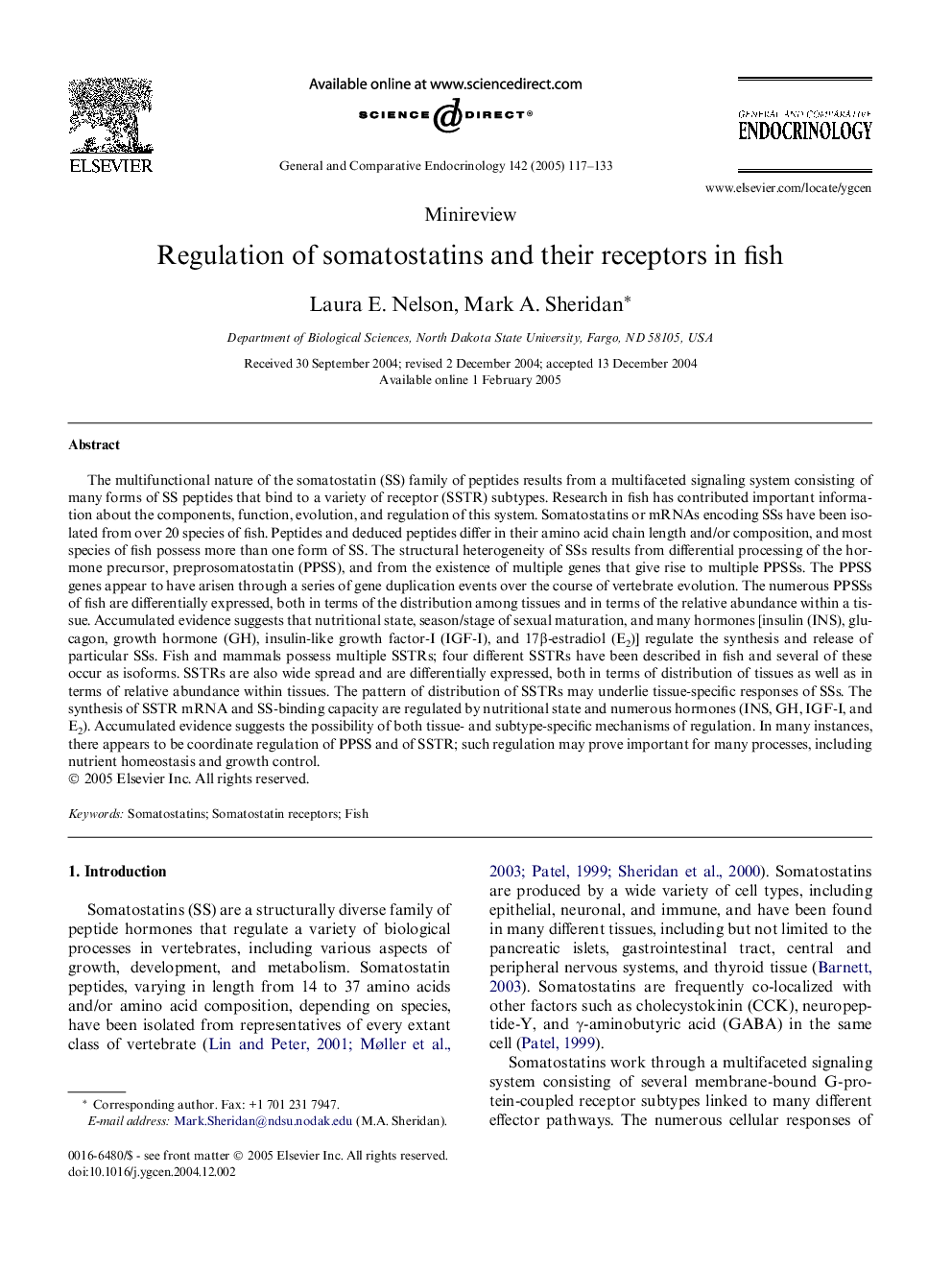| کد مقاله | کد نشریه | سال انتشار | مقاله انگلیسی | نسخه تمام متن |
|---|---|---|---|---|
| 9113199 | 1568935 | 2005 | 17 صفحه PDF | دانلود رایگان |
عنوان انگلیسی مقاله ISI
Regulation of somatostatins and their receptors in fish
دانلود مقاله + سفارش ترجمه
دانلود مقاله ISI انگلیسی
رایگان برای ایرانیان
موضوعات مرتبط
علوم زیستی و بیوفناوری
بیوشیمی، ژنتیک و زیست شناسی مولکولی
علوم غدد
پیش نمایش صفحه اول مقاله

چکیده انگلیسی
The multifunctional nature of the somatostatin (SS) family of peptides results from a multifaceted signaling system consisting of many forms of SS peptides that bind to a variety of receptor (SSTR) subtypes. Research in fish has contributed important information about the components, function, evolution, and regulation of this system. Somatostatins or mRNAs encoding SSs have been isolated from over 20 species of fish. Peptides and deduced peptides differ in their amino acid chain length and/or composition, and most species of fish possess more than one form of SS. The structural heterogeneity of SSs results from differential processing of the hormone precursor, preprosomatostatin (PPSS), and from the existence of multiple genes that give rise to multiple PPSSs. The PPSS genes appear to have arisen through a series of gene duplication events over the course of vertebrate evolution. The numerous PPSSs of fish are differentially expressed, both in terms of the distribution among tissues and in terms of the relative abundance within a tissue. Accumulated evidence suggests that nutritional state, season/stage of sexual maturation, and many hormones [insulin (INS), glucagon, growth hormone (GH), insulin-like growth factor-I (IGF-I), and 17β-estradiol (E2)] regulate the synthesis and release of particular SSs. Fish and mammals possess multiple SSTRs; four different SSTRs have been described in fish and several of these occur as isoforms. SSTRs are also wide spread and are differentially expressed, both in terms of distribution of tissues as well as in terms of relative abundance within tissues. The pattern of distribution of SSTRs may underlie tissue-specific responses of SSs. The synthesis of SSTR mRNA and SS-binding capacity are regulated by nutritional state and numerous hormones (INS, GH, IGF-I, and E2). Accumulated evidence suggests the possibility of both tissue- and subtype-specific mechanisms of regulation. In many instances, there appears to be coordinate regulation of PPSS and of SSTR; such regulation may prove important for many processes, including nutrient homeostasis and growth control.
ناشر
Database: Elsevier - ScienceDirect (ساینس دایرکت)
Journal: General and Comparative Endocrinology - Volume 142, Issues 1â2, 15 May 2005, Pages 117-133
Journal: General and Comparative Endocrinology - Volume 142, Issues 1â2, 15 May 2005, Pages 117-133
نویسندگان
Laura E. Nelson, Mark A. Sheridan,